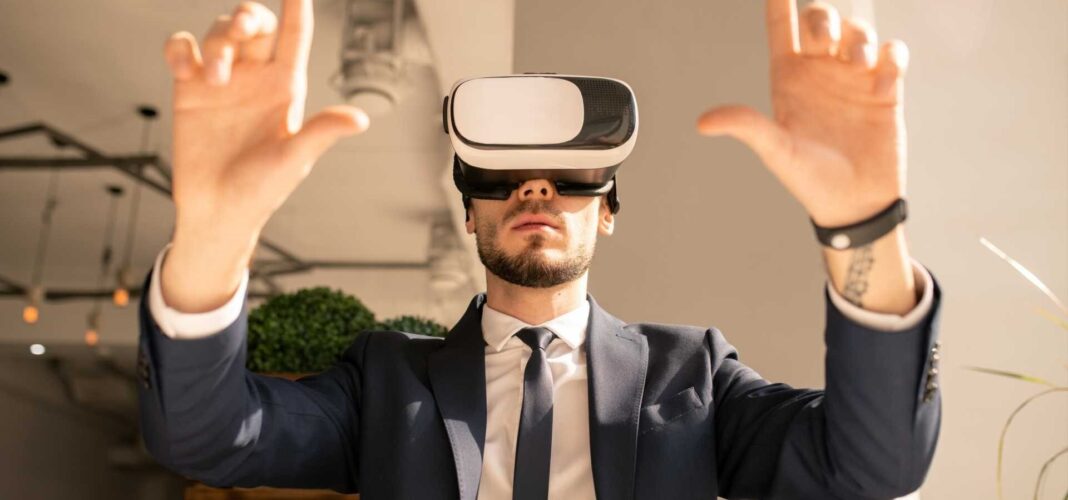As published: VR Training: The Benefits of Real-time Feedback – Training Industry
Immersive learning using virtual reality (VR) provides employees with the opportunity to learn by doing, with real-time feedback and task repetition — all of which build proficiency. VR training is a way to safely replicate actual work environments and provide workers with the freedom to fail without causing physical injury, damage to property or loss of revenue. VR also allows for a more realistic environment, which is more engaging and leads to greater retention of training content.
Advances in VR platforms also enable “live” feedback to take many forms, such as achieving levels of proficiency, the visual review of body posture overlaid on recommended movements or playing out scenarios that include the consequences of poor decision-making.
The Falling Price of VR Training
The economics of VR training have been improving rapidly. Headset resolution continues to increase, and costs have been coming down. To improve the experience further, some headsets can now operate without being tethered to a PC, which makes them easier to use and eliminates the expense of the computer. VR headsets also benefit from improvements in mobile phone technology and are expected to see ongoing advances in performance, especially when compared to price.
The skill set and budget to develop VR training content have traditionally been prohibitive for many organizations. Until recently, VR training often consisted of 360-degree videos of the workplace or computer-generated content that was produced much like a video game or animated movie, with a similar cost structure. While this type of training content provided a more immersive experience, it was typically limited in the number of “branches” or scenarios that organizations could incorporate.
New hybrid development platforms now incorporate game engine technology with low code visual editors and connectors to existing enterprise systems, dramatically improving the economics of producing VR training. This approach also gives more control of content development to the key constituents in the workplace (rather than outside production professionals) and provides greater flexibility to create a variety of real-time feedback and scenario branching.
Hybrid Platform Content Development
Hybrid platforms address some of the major challenges of VR training content creation by:
• Enabling users to easily create scenes from photographs or facility plans and adding and manipulating machinery, fixtures and people using simple editing tools.
• Providing a range of interactivity triggers, including voice and gestures.
• Integrating custom components, charts or data feeds that draw on existing enterprise systems.
• Integrating with motion capture systems that precisely track trainees’ movements and enables multiple learner avatars to interact with one another.
The Gamification of Training
Given the huge popularity of video games, many employees are already likely familiar with the VR experience and the concept of being sent on quests to unlock the next level when they successfully complete a certain task. This popular gaming approach is easily incorporated into many types of process training as well.
As individuals or as members of a team, employees can work through a realistic process scenario and receive the reward of moving to the next level. Failure to complete a task successfully triggers a remedial process — a retry or a review. This gamification approach can increase engagement and enable training professionals to score results and provide incentives to winners. When done well, employees will not only enjoy their training experience, but they will also have improved learning outcomes.
Real-time Feedback
Motion capture, combined with VR training, provides employees with detailed visual feedback on how they perform a physical task. This feedback helps them make the necessary adjustments to improve efficiency and avoid injury by modifying their movements, body position and posture.
Motion capture can also track how employees work together on team-based tasks. For example, an industrial manufacturer that recently shifted its assembly line process used VR to retrain its employees on the new process. The new process required assembly workers to change their movement from reaching up to bending over — a modification that increased the risk of back injury. Their union was supportive of VR motion capture training as a way to provide workers with a repetitive but engaging learning experience on how to hold and use job-related tools.
Scenario training provides real-time feedback in an immersive environment by changing the trainees’ experience based on their decisions and actions. It can be part of a set of scenario trees within the training application, or the trainer can trigger a scenario in real time. For example, in first responder training, a key part of the training experience is triaging a complex accident site. If the accident is by the side of a road, failure to first manage the traffic flow may result in being run over — a scenario that learners can safely play out in VR.
Role-playing
VR is also a great way to train employees on personal interaction skills through role-playing. For example, a frontline employee can safely practice approaches for handling an irate customer, a police officer can practice de-escalating an angry situation and salespeople can practice closing a sensitive deal. In each case, learners are facing and speaking to a life-sized avatar. A successful approach will lead learners to the desired outcome, while a faulty approach will lead to the avatar’s negative reaction (such as shouting at the trainee). This type of immersion and real-time feedback creates an effective learning experience that wouldn’t be possible without running expensive individual training sessions.
The real-time feedback enabled by experiential learning creates an engaging, efficient and effective way of building proficiency across a wide range of tasks. However, it is challenging to realistically simulate many scenarios in a classroom, and recreating live simulations can be both unsafe and cost prohibitive. The improvements in VR headset hardware and flexible content development platforms are making experiential training increasingly appealing to organizations in a wider range of professions and industries.
